Tablet Woven Brocade
This is where I use most of my silk. These ribbons and bands are made using an ancient method called tablet weaving. If you're interested in more information on the weaving technique, please contact me, or check out The Weaver's Hand.
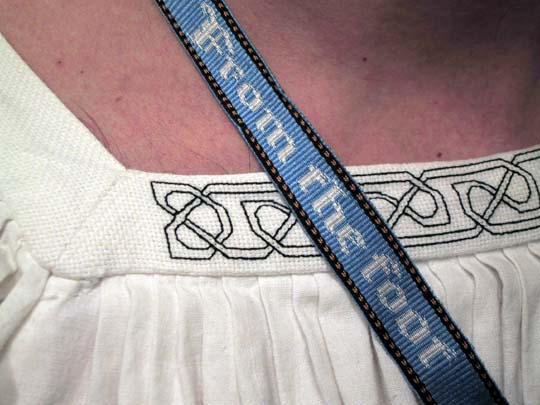
This is the first piece that I have woven entirely from silk that I reeled, degummed, and dyed by hand. It turned out very sheeny and soft, and I'm well pleased. It was made for a friend, Philip, who is a dance instructor - it has his motto on the front, "From the foot to the head." The idea is that your feet learn the dance first, and then your head understands it later. This piece won Best of Show at the 2005 Contemporary Handweavers of Texas show in Austin, and a blue ribbon at the Texas State Fair, 2005.
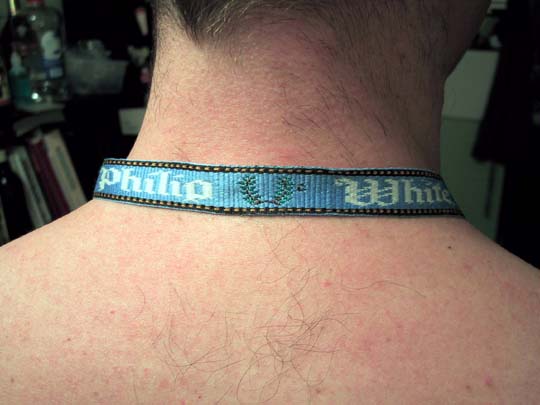
Here's his name, worked on the back. The laurel wreath in the center is brocaded, also using my hand-reeled silk, but the silk for this is untwisted. Untwisted or flat silk is used for applications like brocade and embroidery where the thread does not need to be very strong, but needs to be very shiny.
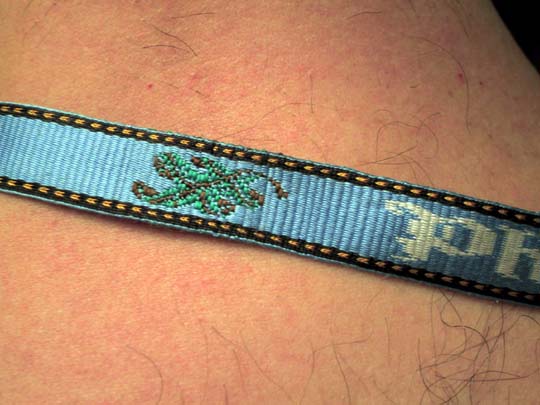
Here's one of the oak leaves; it's brocaded in green and brown silk.
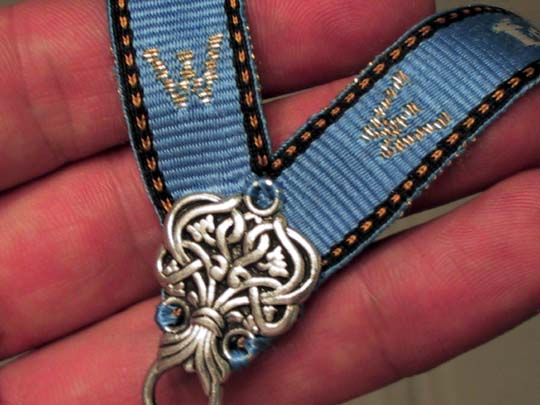
This closure is actually the "eye" part of a fancy pewter hook and eye. It holds the ends of the ribbon together, and joins them to the medallion that hangs from it. I even used the hand-reeled silk to stitch it all together. The only thread on the entire project that I didn't make from scratch is the metallic thread in the letter W on either side; that's Kreinik Japan Gold.
This silk ribbon is made from commercially spun 60/2 silk, with my hand-reeled flat silk as brocading fiber. It is a little over half an inch wide. The plant represents a mulberry, by the way - the kind the silkworms eat.
Here's a shot of it, partially complete, with my hand in it for scale. This piece won the Handweavers Guild of America award at the Dallas Hand Weavers and Spinners Guild's 2004 show, and then took a First Place in Handwovens at the State Fair of Texas. For some reason, the red and black gives the camera fits; it's difficult to get a good shot of the whole thing.
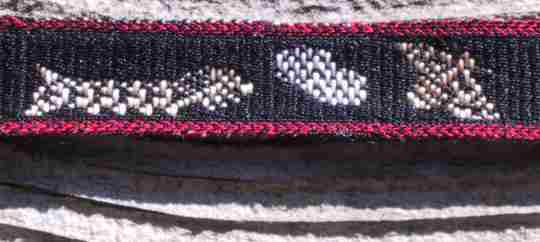
This is in the center of the ribbon; it shows the three stages of the silkmoth, from caterpillar, to cocoon, to moth.

The left end of the ribbon.
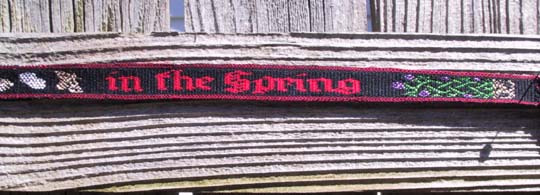
And the right end.
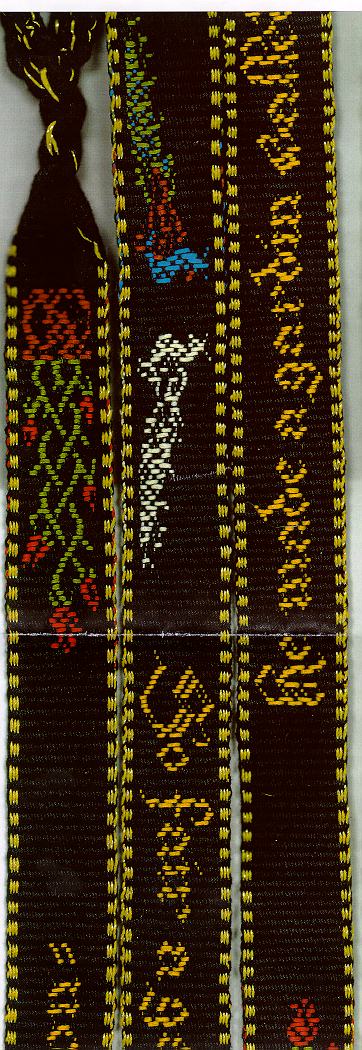
This is part of a brocaded belt; it's made with cotton crochet thread, using DMC embroidery floss for the brocade weft. It's not as shiny as the silk, but it works nicely.
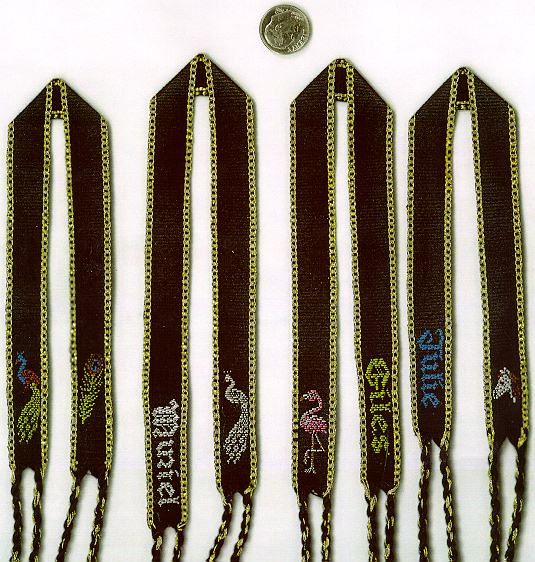
This is a set of ribbons, made from standard poly/cotton sewing thread, and using single-stranded cotton embroidery floss for the brocade. These ribbons are "tags" - they are tied onto things to identify them.
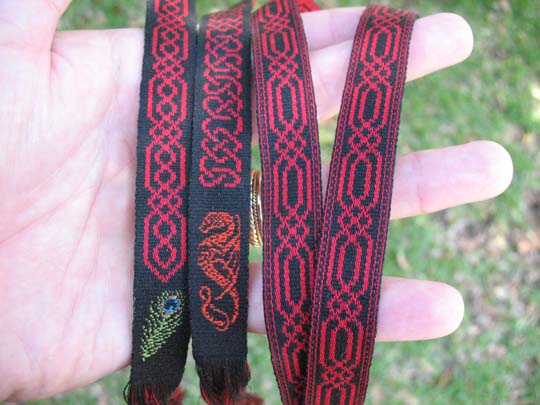
This is part of a ribbon warp. The two short pieces on the left (peacock feather and dragon) are bookmarks; the long folded piece on the right is a neck strap for an ID badge. These are made from 3/100 Gutermann silk sewing thread, with Kreinik Soie Platte for the brocading.
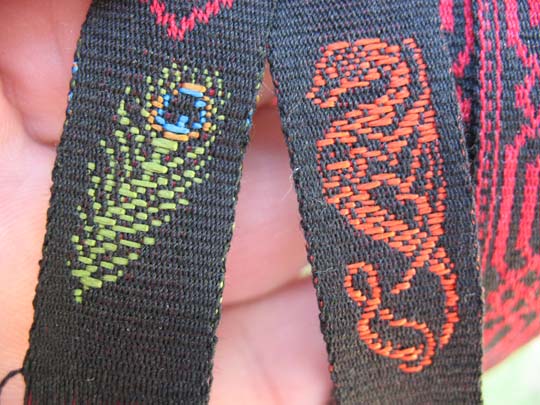
Close-up of the brocade.
This is the kind of pattern I use for brocading. This was generated using PatternMaker from HobbyWare - I highly recommend their pattern design software. It's made for designing cross-stitch patterns, but does an excellent job for tablet weaving graphs. When I'm doing brocading, my pattern beat is usually 1.5 times as long as it is wide, and PatternMaker allows me to stretch the graph to accommodate this. It helps a lot in getting a good idea of exactly how the woven piece will turn out.
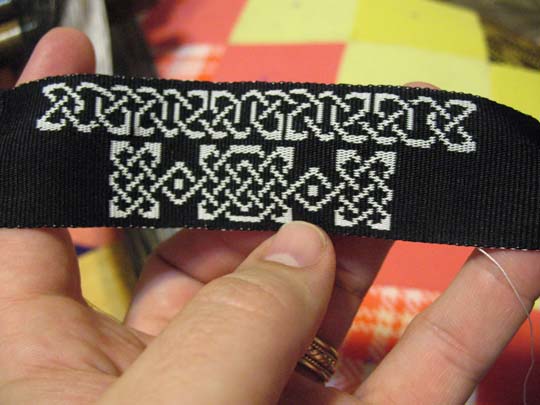
This is, to date (2007) the most tablets I've ever used in a single project - 75 tablets, Gudebrod Size A filament sewing silk.

This is the kind of graph I use for Double-Face design work. The graph "square" is longer than with the brocade; it's between two and three times as long as it is wide.
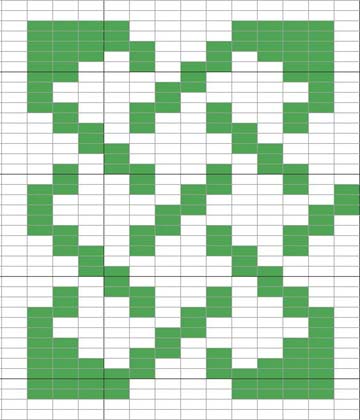
Here's a closer view of a piece of that graph, so you can see the shape of the grid. This one is 12 to the inch width-wise, 5 to the inch length-wise.
This piece will eventually be a name tag and pouch, for using when I attend conventions and do demos; I'll put up some more photos once it's finished.